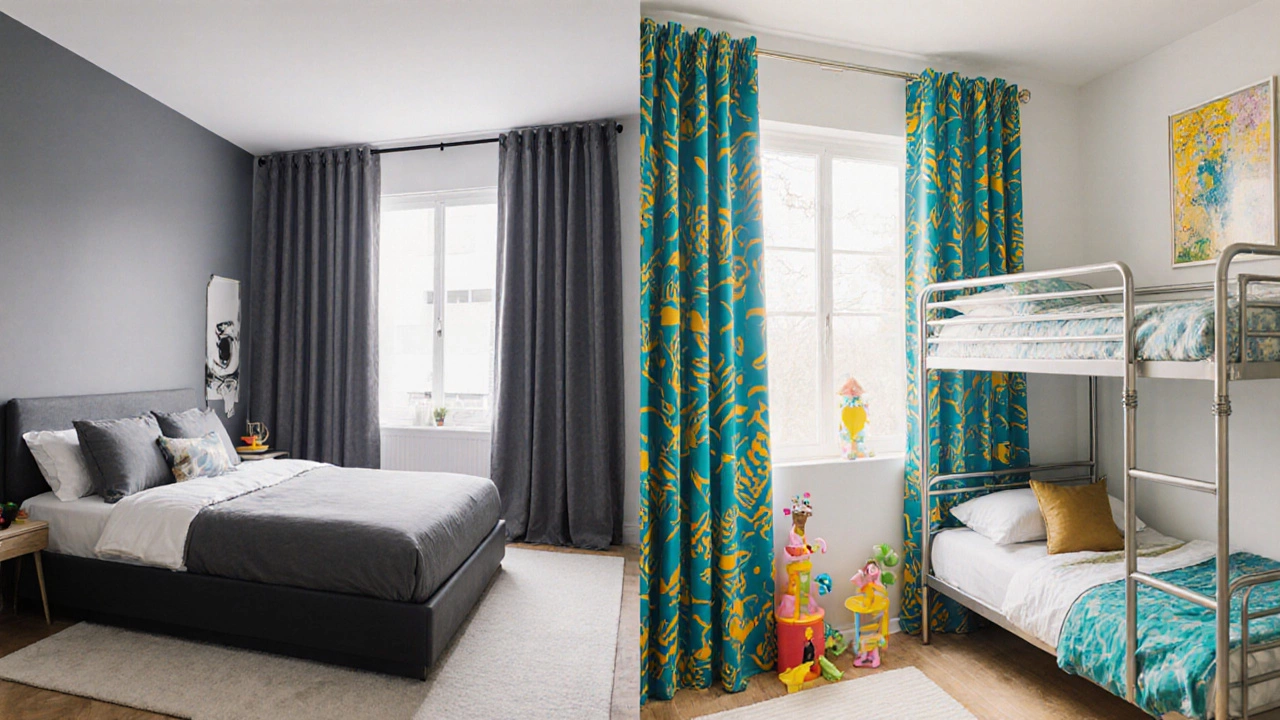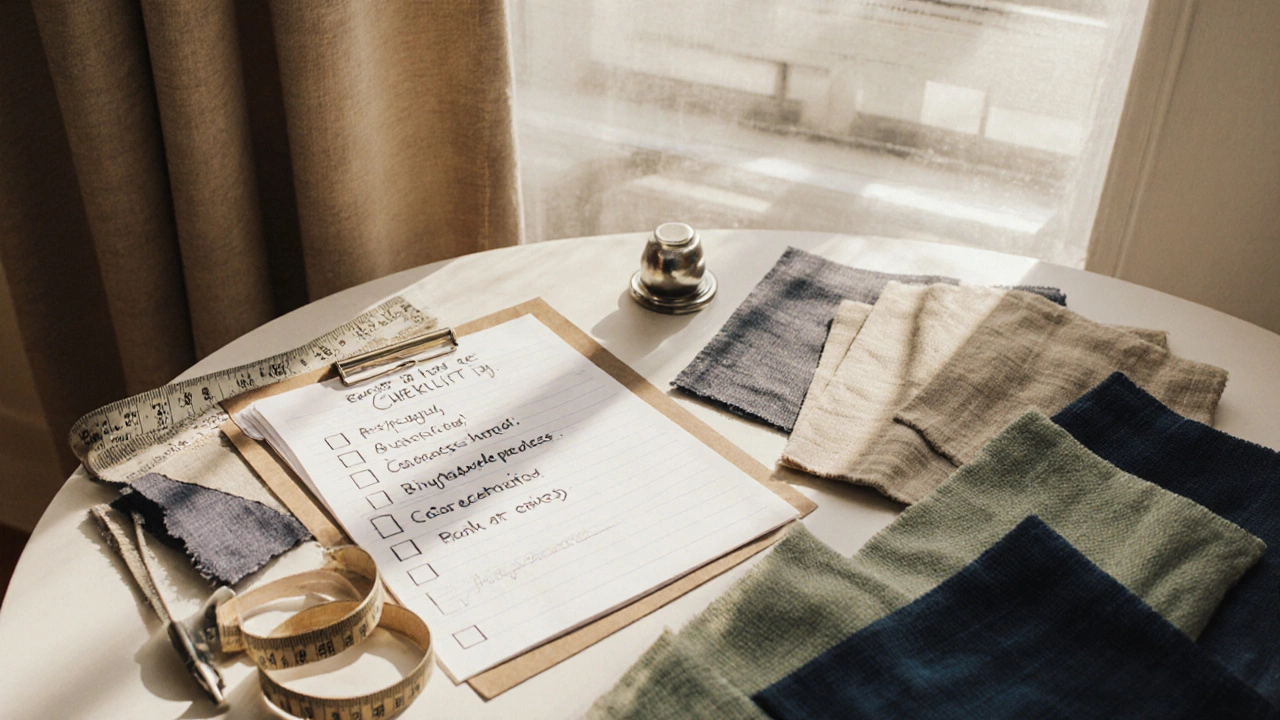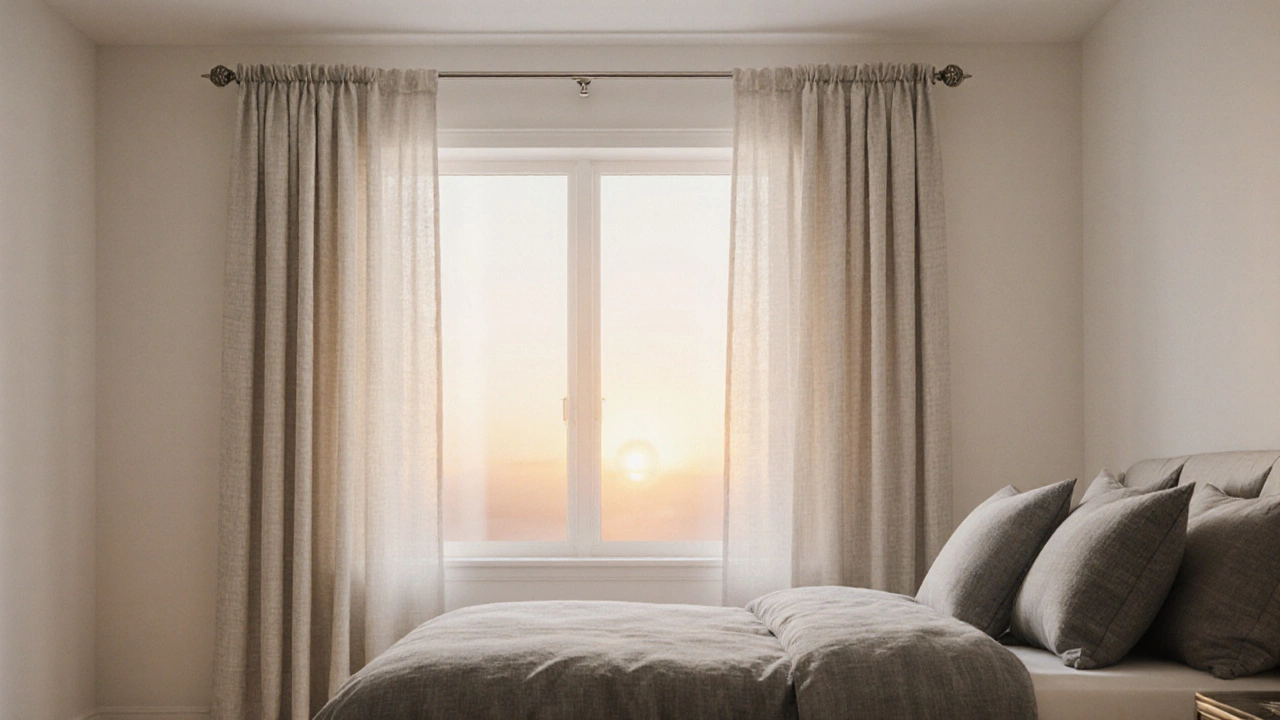Bedroom Curtains Decision Guide
Matching Curtains
Creates visual harmony and is cost-effective. Best for open-plan layouts or when you want a unified look.
Varied Curtains
Allows personalization and function-specific choices. Great for distinct room purposes or unique architectural features.
Your personalized recommendation will appear here after analyzing your selections.
Walking into a house, the first thing you notice in a bedroom is often how the windows are dressed. The question “Should all bedrooms have the same curtains?” pops up more often than you’d think, especially when a new home is being furnished or a house is being redecorated. Some swear by a uniform look for cohesion, while others champion a mix‑and‑match approach that reflects each room’s personality. Below we break down the practical, aesthetic, and emotional factors that help you decide whether to keep your bedroom curtains identical or let each room stand out.
Key Takeaways
- Uniform curtains create visual harmony but can feel impersonal if over‑used.
- Diverse curtains let each bedroom express its function and style, yet may clash without a unifying element.
- Consider light control, privacy, fabric durability, and budget before making a choice.
- Use a simple decision checklist to match curtains to the specific needs of each room.
- Mixing styles works best when you anchor the look with consistent hardware or color accents.
Before diving into pros and cons, let’s define the core elements we’ll be weighing.
What Are Curtains?
Curtains are fabric panels that cover windows, providing privacy, light control, and decorative appeal. They differ from blinds or shades by offering a soft, draped look and can be made from a wide range of materials, from linen to blackout polyester. In interior design, curtains also serve as a backdrop that can tie together other décor pieces.
When Matching Curtains Work Well
Uniformity shines in several scenarios:
- Open‑plan or suite layouts: If two bedrooms share a large wall of windows, matching curtains help create a seamless visual flow, preventing the space from feeling fragmented.
- Minimalist aesthetics: Contemporary styles that favor clean lines and neutral palettes often rely on repetition to reinforce calmness. Identical panels in soft greys, whites, or beiges can reinforce that serenity.
- Budget constraints: Buying one set of curtains in bulk usually reduces the per‑panel cost by 20‑30% compared to ordering multiple custom styles.
- Rental properties: Landlords often install a single curtain style throughout the unit for ease of maintenance and to meet lease‑ready standards.
- Coordinated hardware: If you’ve invested in a specific curtain rod design-say, brushed nickel or antique bronze-matching panels prevent clashes with the hardware finish.

When Different Curtains Add Value
Variety can be a design strength when you consider the unique role each bedroom plays:
- Function‑driven rooms: A master bedroom may need blackout fabrics for better sleep, while a child’s room could benefit from lighter, airy curtains that still provide modest privacy.
- Personal expression: Adults often want a sanctuary that reflects personal taste-think bold colors or patterned drapes-whereas a guest room might stay neutral to appeal to a broader audience.
- Seasonal adaptation: Swapping summer‑weight voile for heavier thermal curtains helps regulate temperature without a full redesign.
- Architectural features: Tall windows, bay windows, or split‑level ceilings sometimes demand custom lengths or styles that a single curtain design can’t accommodate.
- Color harmony: Using the same color palette across rooms while varying patterns keeps a cohesive look without monotony.
Decision Checklist: Same or Different?
Use the following quick‑scan list to decide what each bedroom needs:
- Do the rooms share a wall or view? Yes → consider matching.
- Is privacy a top priority (e.g., ground‑floor bedroom)? Yes → blackout or heavier fabrics, possibly unique per room.
- Do you have a strict budget? Yes → bulk‑order a single style.
- Are you aiming for a distinct vibe in each space? Yes → mix patterns or colors.
- Will the hardware be the same throughout? Yes → keep curtain width/style consistent with rod.
Side‑by‑Side Comparison
| Aspect | Uniform Curtains | Varied Curtains |
|---|---|---|
| Visual Cohesion | High - creates a seamless look | Moderate - relies on shared accents |
| Personalization | Low - limited room‑specific expression | High - each bedroom can reflect its user |
| Cost Efficiency | Better - bulk pricing, fewer fittings | Higher - custom orders, extra hardware |
| Light & Privacy Control | One‑size‑fits‑all; may compromise on needs | Tailored - blackout for master, sheer for kids |
| Maintenance Simplicity | Easy - one cleaning routine | Complex - different fabrics, wash instructions |

Practical Tips for Choosing the Right Curtains
Regardless of whether you go uniform or mix it up, keep these fundamentals in mind:
- Measure accurately: Measure the width at least twice the window size for proper fullness, and add 4‑6 inches for rod clearance.
- Select appropriate fabric based on light needs, durability, and room humidity. Linen works great in low‑moisture areas, while polyester blends resist fading in sunny rooms.
- Think about color harmony. If you opt for different patterns, anchor them with a common base color-perhaps the same hue as your wall paint or bedding.
- Choose compatible hardware. The same rod style can unify diverse panels; use rings or grommets that suit each fabric weight.
- Plan for seasonal swaps. Light voile for summer and thermal lined curtains for winter can be stored in vacuum bags to extend lifespan.
Installation & Ongoing Care
Proper installation ensures curtains function smoothly and look polished helps avoid premature wear.
- Use a sturdy wall anchor that can support the weight of the heaviest curtain you plan to hang.
- Check that the rod extends at least 3‑4 inches beyond the window frame on each side; this maximizes light blockage and makes the window appear larger.
- When hanging, align the top of the curtain with the top of the window frame for a classic look, or lower it to the floor for a dramatic effect.
- Regularly dust the fabric with a lint roller or a vacuum brush attachment. For washable fabrics, follow the manufacturer’s temperature guidelines-generally cold water for delicate blends.
- Rotate curtains seasonally to prevent uneven fading caused by sunlight exposure.
Bottom Line: Blend Consistency with Personality
There’s no hard rule that says every bedroom must look identical. The best answer sits somewhere between “all the same” and “all different.” Aim for a unifying thread-whether it’s a shared color, hardware style, or fabric weight-while allowing each room’s function and occupant’s taste to guide the specifics. This approach delivers a cohesive home that still feels personal and adaptable.
Frequently Asked Questions
Can I use the same curtains in a master bedroom and a child's room?
Yes, but consider the differing needs: the master may benefit from blackout fabric for better sleep, while a child’s room might prefer a lighter, patterned option that still offers privacy. You can keep the same rod and color palette to maintain visual harmony.
What is the most cost‑effective way to buy multiple curtains?
Buying in bulk or choosing a single fabric for all panels usually secures a discount. Look for off‑season sales, or consider ready‑made panels that can be easily tailored to different window sizes.
How do I ensure my curtains don’t make a room feel smaller?
Hang curtains wider than the window and let them fall slightly beyond the frame. Light, sheer fabrics also help reflect natural light, creating an illusion of more space.
Is it worth investing in custom‑made curtains for every bedroom?
Custom curtains offer perfect fit and unique design, but the cost adds up quickly. If budget is tight, use ready‑made options for secondary rooms and reserve custom work for the master bedroom where impact is greatest.
What hardware works best with heavy blackout curtains?
Heavy‑duty rods with sturdy brackets, preferably made of metal, paired with curtain rings or levered hooks, provide the support needed for thick, insulated fabrics.
